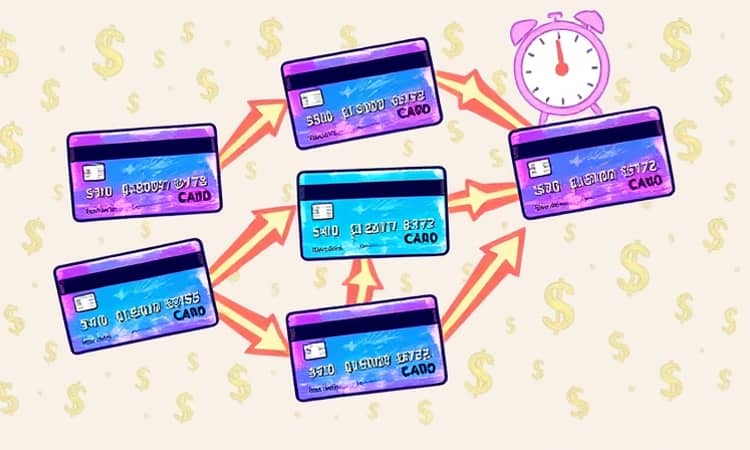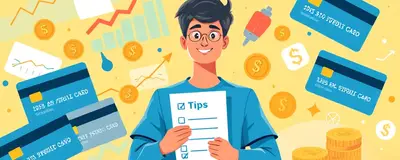Credit Card Balance Transfers: Everything You Need to Know

Managing multiple credit card balances can feel overwhelming, but a well-timed balance transfer can offer a lifeline. By understanding the process, fees, benefits, and pitfalls, you can take control of your finances and potentially save hundreds or thousands on interest.
In this comprehensive guide, we’ll walk you through every aspect of0% introductory APR period lasting months, ensuring you have the knowledge to make informed decisions andavoid accumulating more debt unintentionally.
What Is a Credit Card Balance Transfer?
A credit card balance transfer is a financial strategy where you move an existing balance from one card to another, usually to take advantage of a promotional interest rate. Most consumers pursue this option when they find a card offeringsaving hundreds or even thousands of dollars in interest during a set period.
When executed correctly, a balance transfer lets you consolidate multiple debts into one monthly payment, simplify your budgeting, and accelerate debt repayment.
How Does a Balance Transfer Work?
The balance transfer process may seem complex at first, but it follows a clear series of steps:
- Decide how much to transfer: Prioritize high-interest balances to maximize your savings.
- Apply for a balance transfer card: Choose a card offering an attractive introductory rate and manageable fees.
- Initiate the transfer: Provide the new issuer with your old card details and specify the transfer amount.
- Wait for approval: Transfers typically take 3 to 15 business days; continue paying minimums on your old card.
- Repay the balance: Aim topay off your balance in time before the promotional APR ends.
Once the transfer is complete, your new card balance includes the transferred debt plus any fees. From there, on-time payments are crucial to maintaining the promotional rate.
Key Fees and Rates to Consider
Before initiating any transfer, evaluate the numbers and potential costs. Common elements include:
- Balance Transfer Fees: Typically 3%–5% of the amount transferred, with minimum fees of $5–$10.
- Introductory APR: Often 0% for 6–21 months, depending on the offer.
- Post-Promo APR: Standard rates can jump to 16%–30% after the introductory period.
- Credit Limit Restrictions: The amount you can transfer is capped by your new card’s limit.
Benefits of Balance Transfers
When used wisely, balance transfers offer several compelling advantages:
- Interest Savings: Reduce or eliminate interest charges during the promotional period.
- Debt Consolidation: Merge multiple payments into one, making it easier to track and budget.
- Credit Score Improvement: Lower overall utilization ratio if managed responsibly.
By focusing on high-interest debt, you can channel more of your payment toward principal, accelerating your debt-free journey.
Risks and Potential Pitfalls
No financial tool is without drawbacks. Be mindful of these common risks:
- Fees Eroding Savings: A high transfer fee can negate interest savings if your balance is low.
- High Post-Promo Rates: Any remaining balance after the intro period may incur steep interest charges.
- Temptation to Overspend: A new low-utilization ratio may encourage unplanned purchases.
- Transfer Limits: Some cards impose separate caps on transfers, reducing potential benefits.
Always factor in upfront fees and plan to pay off the debt long before your promotional rate expires.
Strategic Tips for Maximizing Savings
To capitalize on your balance transfer, follow these best practices:
Calculate your real savings accurately by subtracting fees from projected interest avoided. This ensures you only transfer when it truly makes sense.
Choose cards with the longest 0% APR offers, lowest fees, and no annual charges. Set up automatic payments tominimize your interest payments and avoid missed deadlines.
Resist using your transfer card for new purchases unless it also offers a promotional purchase APR. Mixing new balances with transferred debt can complicate repayment and increase costs.
Putting It All Together: The Full Process At a Glance
Ready to start? Here’s a clear path to follow:
1. Review each of your card balances, interest rates, and payment due dates. Identify the debt costing you the most in interest.
2. Research and apply for a card that aligns with your needs—consider credit requirements and transfer limits.
3. Request the transfer, providing the original creditor’s information. Keep paying minimums on your old card until the move is confirmed.
4. Monitor your new account to ensure the transfer completes as expected. Confirm the fee and new balance.
5. Create a repayment schedule topay off your balance in time, targeting the promotional period end date.
6. Continue tracking both accounts for any discrepancies or additional charges, and adjust your budget as needed.
Conclusion
Credit card balance transfers can be a powerful tool when you approach them with a clear plan. By understanding fees, timelines, and best practices, you can use promotional rates to knock down high-interest debt more efficiently.
Remember tocalculate your real savings accurately, stay disciplined with payments, and avoid the urge to rack up new charges. With the right strategy, you’ll be on your way to simplified finances and a healthier credit profile.
References
- https://www.pnc.com/insights/personal-finance/spend/when-to-consider-a-balance-transfer.html
- https://www.investopedia.com/credit-cards/balance-transfer-credit-card/
- https://www.equifax.com/personal/education/credit-cards/articles/-/learn/balance-transfer-credit-card/
- https://bettermoneyhabits.bankofamerica.com/en/debt/how-do-balance-transfers-work
- https://www.chase.com/personal/credit-cards/education/basics/what-is-a-balance-transfer
- https://www.bankrate.com/credit-cards/balance-transfer/what-is-a-balance-transfer-fee/
- https://www.commercebank.com/personal/ideas-and-tips/2021/what-is-a-balance-transfer
- https://www.capitalone.com/learn-grow/money-management/how-to-do-a-balance-transfer/






